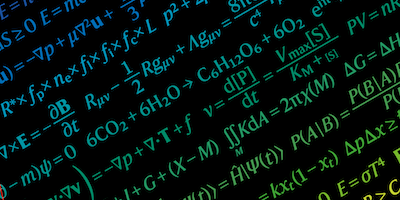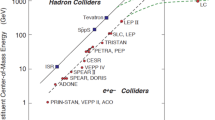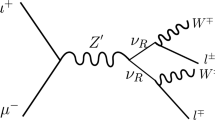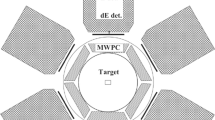Abstract
The standard model of particle physics describes the strong and electroweak interactions of fermions (spin-1/2), gauge bosons (spin-1) and a final vital ingredient—the spin-0 Higgs boson, which gives masses to the other particles. But the Higgs boson has yet to be discovered, and its own mass is not specified by the theory. There is some evidence (although statistically not very significant) for its detection at a mass of about 115 GeV/c2, from electron–positron interactions at LEP (the Large Electron Positron collider). Indirect methods can also be used to constrain the mass of the Higgs boson, because it affects other observable quantities (for example, the mass of the W boson and some measurable properties of the Z boson). An indirect determination of the Higgs boson mass from the most recent measurements of such quantities yields a value compatible with 115 GeV/c2, but with some important caveats arising from inconsistencies in the present data.




Similar content being viewed by others
References
Renton, P. B. Electroweak Interactions (Cambridge Univ. Press, Cambridge, 1990)
Higgs, P. W. Broken symmetrics, massless particles and gauge fields. Phys. Lett. 12, 132–133 (1964)
Higgs, P. W. Spontaneous symmetry breaking without massless bosons. Phys. Rev. 145, 1156–1163 (1966)
ALEPH, DELPHI, L3 and OPAL Collaborations. Search for the Standard Model Higgs Boson at LEP. Phys. Lett. B 565, 61–75 (2003)
The LEP Collaborations, ALEPH, DELPHI, L3 and OPAL. Combined Preliminary Data on Z Parameters from the LEP Experiments and Constraints on the Standard Model (CERN/PPE/94–187 CERN, Geneva, 1994)
Abe, F. et al. Observation of top quark production in p̄p collisions with the collider detector at Fermilab. Phys. Rev. Lett. 74, 2626–2631 (1995)
Abachi, S. et al. Observations of the top quark. Phys. Rev. Lett. 74, 2632–2637 (1995)
Renton, P. B. Precision electroweak tests of the Standard Model. Rep. Prog. Phys. 65, 1271–1330 (2002)
Gambino, P. The top priority: Precision electroweak physics from low to high energy. Proc. Lepton Photon 2003 (in the press)
Affolder, T. et al. Measurement of the top quark mass with the collider detector at Fermilab. Phys. Rev. D 63, 032003 (2001)
Abbott, B. et al. Measurement of the top quark mass in the dilepton channel. Phys. Rev. D 60, 052001 (1999)
Demortier, L. et al. Combining the top quark mass results for Run 1 from CDF and D0. (FERMILAB-TM-2084, Fermilab, Batavia, IL, 1999); 〈http://tevewwg.fnal.gov/top/fermilab-tm-2084/pdf〉 (1999).
Zeller, G. P. et al. Precision determination of electroweak parameters in Neutrino-Nucleon Scattering. Phys. Rev. Lett. 88, 091802 (2002)
Hagiwara, K., Particle Data Group et al. . Phys. Rev. D 66, 010001 (2003)
Acknowledgements
I thank my colleagues in the LEP Electroweak Working Group for discussions.
Author information
Authors and Affiliations
Corresponding author
Ethics declarations
Competing interests
The author declares that he has no competing financial interests.
Rights and permissions
About this article
Cite this article
Renton, P. Has the Higgs boson been discovered?. Nature 428, 141–144 (2004). https://doi.org/10.1038/nature02324
Issue Date:
DOI: https://doi.org/10.1038/nature02324
- Springer Nature Limited
This article is cited by
-
Behind the hunt for the Higgs boson
Nature (2007)





